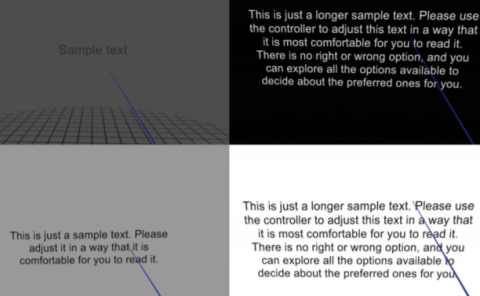Shrinking Circles: Adaptation to Increased Curvature Gain in Redirected Walking
PubDate: February 2019
Teams: University of Muenster
Writers: Luke Bölling; Niklas Stein; Frank Steinicke; Markus Lappe
PDF: Shrinking Circles: Adaptation to Increased Curvature Gain in Redirected Walking

Abstract
Real walking is the most natural way to locomote in virtual reality (VR), but a confined physical walking space limits its applicability. Redirected walking (RDW) is a collection of techniques to solve this problem. One of these techniques aims to imperceptibly rotate the user’s view of the virtual scene in order to steer her along a confined path whilst giving the impression of walking in a straight line in a large virtual space. Measurement of perceptual thresholds for the detection of such a modified curvature gain have indicated a radius that is still larger than most room sizes. Since the brain is an adaptive system and thresholds usually depend on previous stimulations, we tested if prolonged exposure to an immersive virtual environment (IVE) with increased curvature gain produces adaptation to that gain and modifies thresholds such that, over time, larger curvature gains can be applied for RDW. Therefore, participants first completed a measurement of their perceptual threshold for curvature gain. In a second session, the same participants were exposed to an IVE with a constant curvature gain in which they walked between two targets for about 20 minutes. Afterwards, their perceptual thresholds were measured again. The results show that the psychometric curves shifted after the exposure session and perceptual thresholds for increased curvature gain further increased. The increase of the detection threshold suggests that participants adapt to the manipulation and stronger curvature gains can be applied in RDW, and therefore improves its applicability in such situations.


